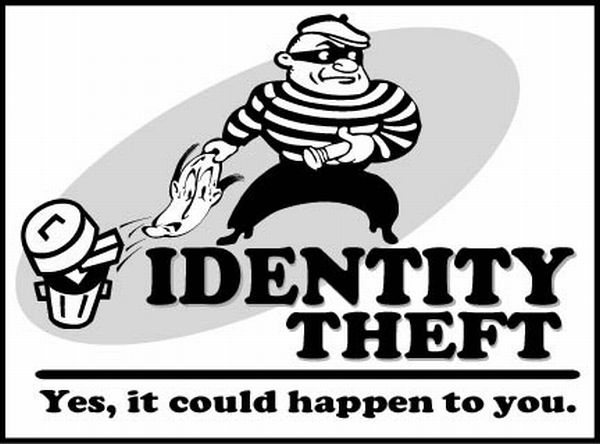I haven’t been a victim of identity theft. Not yet. Is it because of being careful or just plain luck, I don’t know, but probably a combination. However, I do know of several friends whose information was stolen and used to purchase items fraudulently. Also, with more news reports about this type of thing happening – and how easily it happened – I realized that I had to be more cautious and deliberate with how I handled my private information and who could access it.

Below are six steps that everyone should follow to ensure that their information is safe, or if something does happen, the damage is limited.
1. Check statements frequently and regularly:
This is something I do daily. Every morning, I get up, get my tea, then check my accounts. Maybe it sounds like overkill or time-consuming, but it isn’t. It takes only a few minutes at most, and it allows me to compare the balance in my accounts with the transactions that I have performed. Not only can I see if anyone has accessed my accounts illegally, but even better, I can keep an eye on my finances to make sure that I am not overdrawn, that cheques have come out of my account, and essentially, to make sure my accounts are financially healthy. Once you get into this habit, it takes only a quick glance to make sure that everything is ok… or not.
2. Shred documents:
There are many ways that others can get hold of your personal information, and that’s through bank statements. For a long time, I thought I would be “green” and recycle my documents – cleverly hidden under old newspapers and flyers, so I thought. But once that box is out on the curb, it’s fair game to all. I still recycle my documents, but I shred them first, and additionally, I don’t put them all into the recycling box on the same week. It will take a very patient person to get hold of my information.
3. Protect yourself online:
I really don’t like paper, and I don’t like shopping either. I prefer to do as much shopping as possible online, and I like to get my statements emailed to me. Again, it’s that environmental thing. But if someone wants details, they can get them. So, protect yourself online. Use only trusted web sites. If anything looks suspicious, stop doing it Immediately and report it. Change passwords often and make them unusual, long, with different characters, and don’t use anything identifiable like the names of your kids, dog, or spouse. Also use security software that you update regularly.
4. Always know where your identification is:
I’m not the most aware person at times. I can be trusting. And I don’t use a purse. I keep my identification in a little holder that I enjoy for its small size and efficiency. Sometimes I get a little forgetful and can’t remember where I put the darn thing. As Lexington Law explains, that’s what criminals like – a moment of forgetfulness, excessive trust, and distraction. By the time you realize that your wallet is gone, your identity could be with anyone, anywhere. Therefore, always know where your ID is. If you can’t find it, report it lost as soon as possible – you can easily call back saying you found it, and it prevents anyone from accessing that information illegally.
5. Choose PINs wisely:
Passwords and PINs – I have tons of them for my multiple savings accounts, checking account, retirement account, my several email accounts, social networking account… you get the picture. Each one requires a password. At one point, I used a simple password for most of them because it was easy to remember. But if someone got hold of that password, then they would have access to just about all of my personal information. Eventually, I started changing each of them to be different, difficult to guess, long, meaningless to others, and I change them often.
6. Be suspicious:
I like to be nice, but being nice doesn’t mean trusting others blindly. So, if I do purchase something in a store with my debit card, I make sure no one is in my personal space, and I cover the keypad. I don’t give out personal information in person or on the phone – only confirm details. And if something doesn’t feel right, I discontinue the conversation or transaction. I can always return to it when I need.
If someone wants your information, then there is a possibility that they can get it. But don’t make it easy for them. By using the measures above, you can protect yourself as much as possible from identity theft, and if it does happen to you, you can mitigate the damage with as little impact as possible. Protect yourself – you’re worth it.
This article was written by Chase Sagum, author and blogger covering Financial and Political topics.

